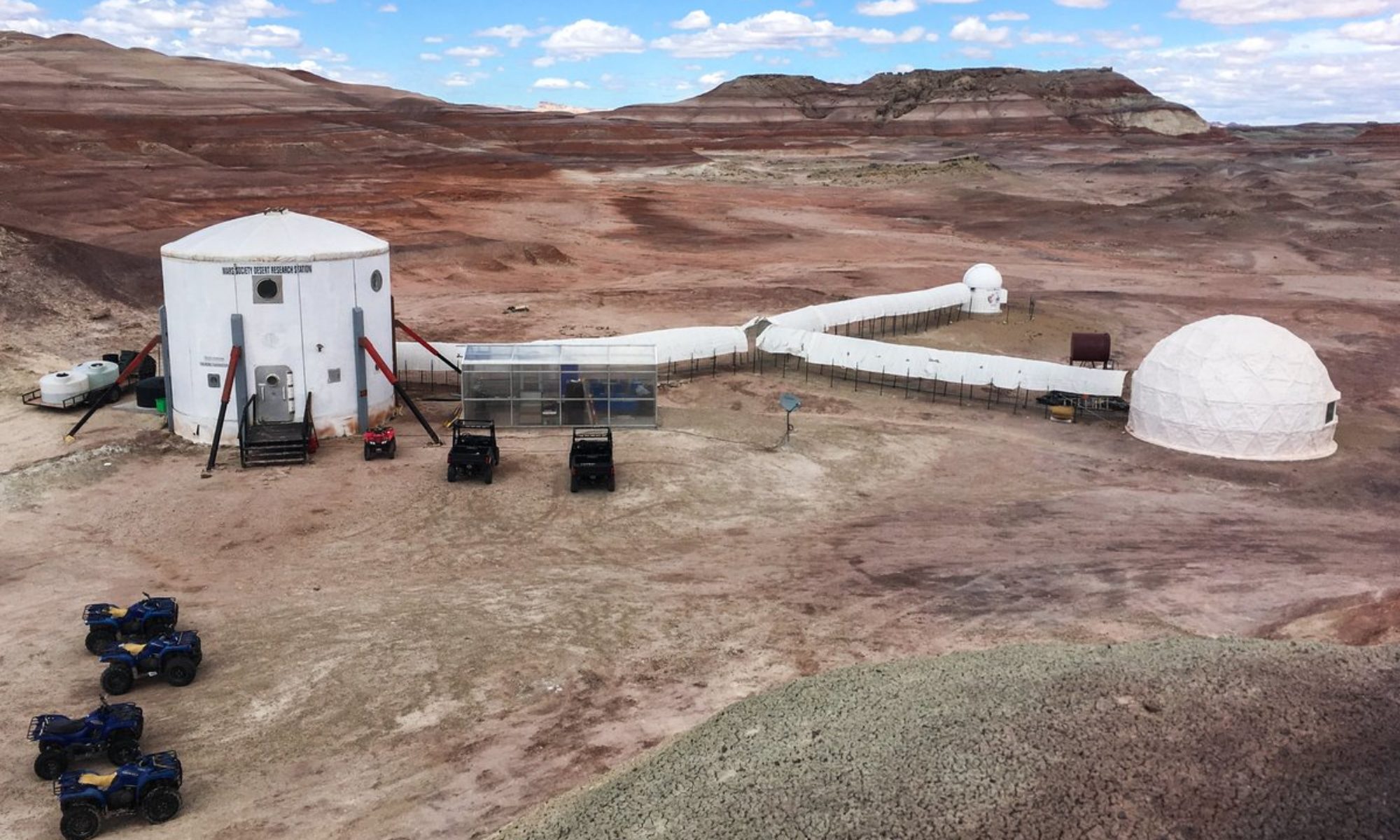MDRS Crew 188 Journalist Report 02FEB2018
Safety, Security, and Smelling Gas: Procedures on Mars
SOL-5 Author’s name: Dr. Sarah Jane Pell
During site inductions, Dr. Rupert, Director of the Mars Desert Research Station, explained that “Safety, Simulation, and Science” are the order of priorities and operation during the MDRS Crew rotations. The theme for this report is Safety. Dedicated Simulation and Science reports will follow in the coming days.
BACKGROUND: The MDRS station was designed to mimic the systems integration of a future Martian outpost that supports an optimum crew of 3-7 people. The facilities include the basic infrastructure for self-sustaining living, and supporting typical planetary research-activities and science from astronomy to human health. In addition to the main habitat, there is a green house, a science dome, solar panel array, an engineering unit, parking space, incinerator, generator and two observatories. There are open-air wire tunnels between each module. Since arriving, we have been discovering, documenting and discussing the status of the station’s safety equipment as a matter of priority. SAFETY: As the Operations reports show, our Crew has been responding to a Propane leak recorded in the main habitat: the place where we eat, sleep, train, relax, prepare reports and prepare for EVA work. As an expert commercial diver with a vested interest in identifying combustible gas, I reported the leak to the Director during our first safety briefing. Subsequently the crew began reporting the same smell in large concentrations on the first and second floors with noticeable concentrations above the gas heater, the gas stove, and crew rooms without ventilation ports. Engineer Zac Trolley and the crew have worked methodically and professionally to report, identify, localize and mitigate exposure to the build-up on site to address this safety concern. We are grateful for the support of Commander Ryan Kobrick (Second Engineer), Executive Officer Renee Garifi, the Mission Support Team, MDRS Director, and our HSO. Remember, we travelled from sea level to high altitude from four corners of the globe: we arrived jet-lagged and fatigued, to a dry, cold desert environment, to adjust to new surroundings as a crew for the first time. Many of our symptoms – bar the undeniable and nauseating odor – could be attributed to any number of causes. Fortunately, the tank readings, the Director’s observation, the combustible gas monitoring sensor and the old-fashioned “bubbles” test, confirmed our suspicions. We are now reassured that steps are being taken to addressing the issue. What happens on MDRS is always an opportunity to learn lessons in real-life for application in space. While our Crew is only here for two weeks, and we have access to fresh air without breaking simulation, we are mindful of the risks and hazards for crews on long-duration spaceflight and those living in confined space closed-loop systems such as submarines or underground mining stations, where contamination is a higher risk to human life than fire. How we respond to risk defines us. We hope to provide the Mars Society with a list of recommendations and simple provisions that were not provided for our SIM, in the hope of supporting the safety and fidelity of future simulation crews.
Dr. Sarah Jane Pell
TED Fellow 2010, Australia Council Fellow 2016, Gifted Citizen 2016
The ‘Performing Astronautics: following the Body’s Natural Edge into the Abyss of Space’ project is assisted by the Australian Government through the Australia Council, its arts funding and advisory body http://www.artistastronaut.com
Artist, Occupational Diver, Keynote Speaker, Researcher, Simulation Astronaut http://www.sarahjanepell.com

